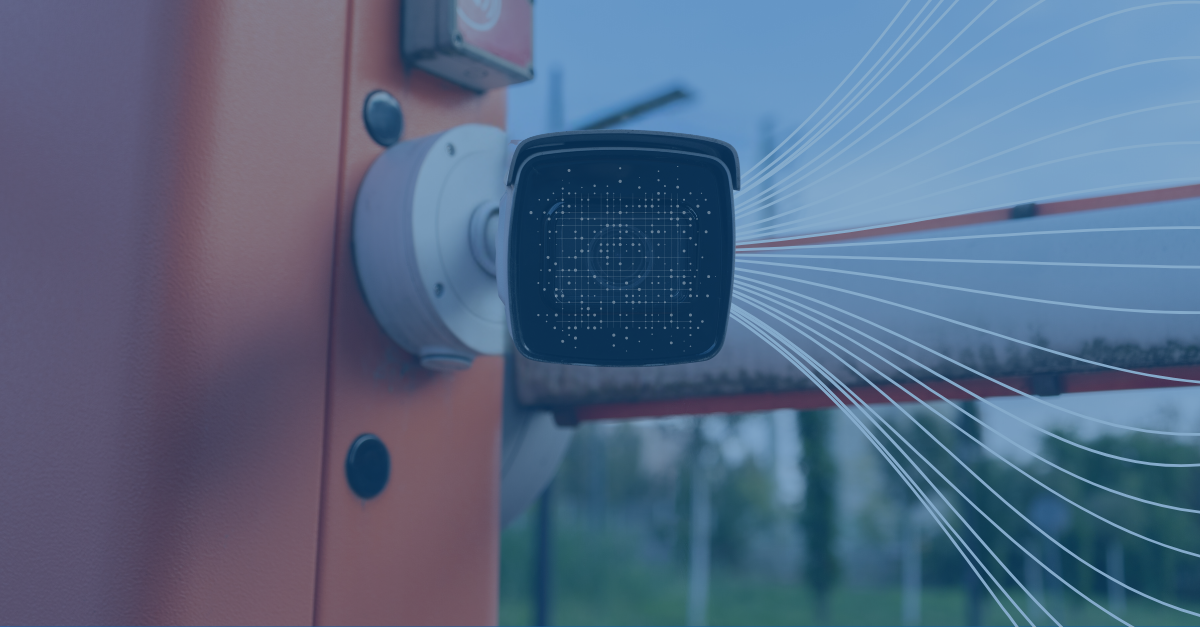Vehicle access control (VAC) is a critical technology used to ensure that only authorized persons and vehicles can enter (or exit) a secured facility, such as a warehouse or manufacturing plant. In an era of heightened concerns over the infiltration of bad actors, both domestic and foreign, VAC for gate access has risen in importance as an enhanced security measure.
Now comes the use of intelligent gateways interconnected with VAC, a next-generation step to improve security and efficiency. Intelligent gateways have the ability to enhance VAC by using AI to recognize vehicles and detect anomalies. In addition, automating gate processes reduces human errors and speeds up processing, ensuring a secure, efficient traffic flow and robust data protection.
Understanding Intelligent Gateways
An intelligent gateway is a network device that allows the creation of various services and applications. It can also bridge networks in order to scale command and control without investing in new equipment or software upgrades. For example, an intelligent gateway can connect multiple networks, such as those for situational awareness, ISR (intelligence, surveillance, and reconnaissance), or command and control. It can also share data air to air, air to ground, and between multiple domains.
An intelligent gateway can be set up to interface with a VAC system by integrating with various components such as barriers, security cameras, and sensors. It uses a central processing unit (CPU) with artificial intelligence embedded to analyze data from VAC devices in real time.
An intelligent gateway can recognize incoming vehicles through technologies like RFID, license plate recognition, or biometric sensors. Based on a company’s predefined security protocol, the system analyzes data to determine whether to grant or deny access.
This decision-making process is often automated, improving both the speed and accuracy of vehicle entries and exits. Commands are communicated in real time to the physical barrier systems to either allow or prevent access. An intelligent gateway can also collect and store entry data, feeding into analytics for traffic management and security monitoring.
The Role of Artificial Intelligence
AI is pivotal in transforming gateways into intelligent systems. With it, an intelligent gateway can recognize and authenticate vehicles with a high degree of accuracy. Over time, AI algorithms are trained to process and interpret visual information from security cameras to identify vehicles, read license plates and other distinguishing numbers, and even detect unusual patterns or potential security threats.
This capability of continuously learning and adapting, powered by AI, helps intelligent gateways evolve and become smarter over time, making them more effective in threat assessment and response.
Automation in Access Control
Automation is another key capability of today’s intelligent gateways. Processes that can be automated include license plate recognition and the use of RFID scanners to enable faster vehicle processing. Here are two benefits of an automated intelligent gateway integrated with a VAC system:
- Reduce human errors: By minimizing human intervention, these systems decrease the probability of errors that could compromise security.
- Faster processing times: Automation speeds up the vehicle verification process, enabling smoother traffic flow through access points and reducing congestion.
Security Enhancements
By leveraging AI and automation, intelligent gateways represent a substantial improvement in security protocols for VAC systems. This includes the use of advanced encryption methods and secure data management practices. Both of these capabilities help safeguard sensitive personal and business information.
AI also enhances a gateway’s ability to promptly identify and mitigate potential threats. This ensures a high level of security for facilities that require stringent access control measures.
Efficiency and Traffic Management
Intelligent gateways, by their very nature, can manage and streamline traffic flow seamlessly, at the gate and throughout the facility. This is because they are designed to handle fluctuating traffic volumes efficiently, especially during peak hours of operation.
By analyzing traffic patterns and predicting potential instances of congestion, the gateway can adjust controls to optimize traffic flow. This helps significantly reduce bottlenecks, improving operational efficiency. Downstream benefits include improved inventory management from timely arrival of shipments, and coordination of dock assignments for trucks.
Future Trends in Intelligent Gateways for VAC
Potential advances to these smart VAC systems include more sophisticated AI algorithms that will be capable of even greater accuracy in predictive recommendations. Also, integrating intelligent gateways with other smart systems (i.e., public safety and emergency management) could foster a more cohesive approach to urban security and functionality.
Intelligent Gateways: Enhancing the State of the Art for VAC Systems
Intelligent gateways are redefining VAC capabilities by integrating AI and automation. This not only enhances security and efficiency but provides a scalable solution that can adapt to future challenges. The evolution of intelligent gateways will continue to play a key role in increasing the safety and efficiency of gate processes and overall yard logistics.
EAIGLE is an innovator in logistics management technology, leveraging advanced AI and automation technologies. Using data feeds from security cameras, EAIGLE’s state-of-the-art AVAC™ (Automated Vehicle Access Control) automates and optimizes gate traffic routing. It also integrates seamlessly with existing Yard Management Systems (YMS) and operates in real time to provide a holistic view of the vehicle and asset management.
Going well beyond legacy VAC systems, AVAC™’s optical character recognition (OCR) captures 25 vehicle data points, including license plates, ID numbers for trailers, containers and chassis, and US DOT numbers. AVAC™ provides comprehensive vehicle data collection, registration, and validation. This ensures that only authorized vehicles and personnel are granted entry and exit.
The benefits of AVAC™ can be summarized by the acronym TLCC:
- Time: saving 2 to 20 minutes in processing inbound/outbound vehicles
- Labor: reducing staff by 5 FTEs per shift, per gatehouse
- Claim: automated processing of damage and detention claims
- Compliance: automated data collection and reporting for compliance (ISR, C2, etc.)
To learn more about how EAIGLE and AVAC™ can drive efficiency and security at your facility, request a demo today.


